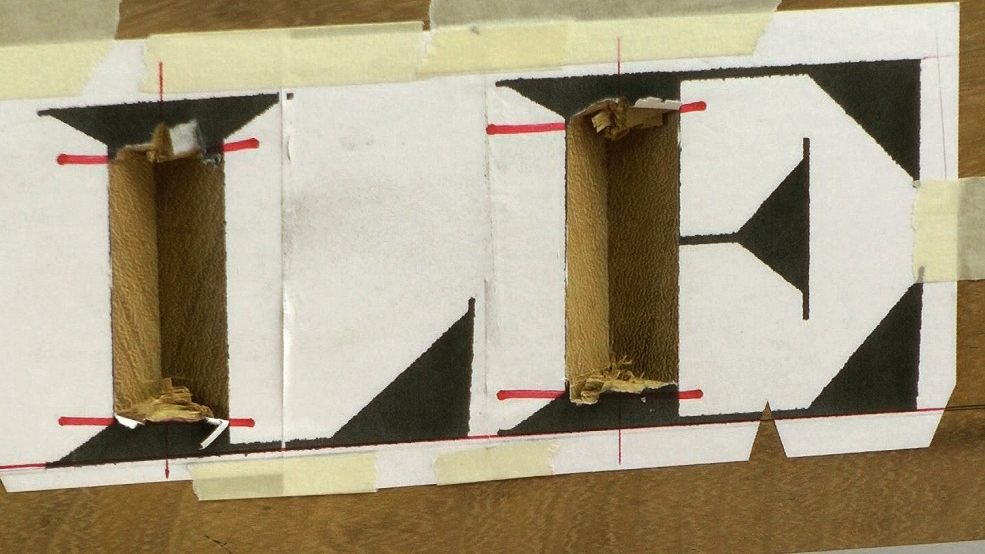You've just watched 2 Uprights
More videos from


A good place to start carving the letters is with the straight elements: uprights, horizontals and diagonals...

| 11 April 2016 19:53
Mitchell - 'Kiln dried' usually means the wood has done all it's moving and shrinking, so if the board was planed flat afterwards I wouldn't expect it to change shape significantly. Make sure you seal the wood both front and back. Look forward to seeing your carving in the gallery!

| 09 April 2016 06:00
Chris - The bow in the this wood was not a problem for you, but would you have any concerns about using a kiln dried flatsawn panel roughly 15" wide and 3/4" thick? I understand that such a board will probably cup, but would this be a problem with a free-hanging letter carving?

| 05 March 2014 16:30
Ann - Stop cuts, almost by definition, and certainly in this case, are placed in the waste wood. So, you are right: not down to the finished depth. I find somewhere between a third and half way down usually works. You can repeat the stop cuts at any time; they break the grain and help the wates come out.

| 05 March 2014 16:28
Kelly - 4lbs is a very heavy mallet! You need to think of the strees on your elbows etc. I would (and do) stick to a weight around 20oz - 2lb and take longer. A lot of mallet work involves 'playing' the wood and removing it efficiently. Also don't forget that wrist flick - have a look at the mallet videos (Tools > bench tools > mallets)

| 05 March 2014 10:36
Chris, is it true that the v-cut or stop-cut isn't down to the finished depth?

| 20 January 2014 11:19
Chris, how important is the weight of the mallet? Should I up-grade to a four pound from my two pound mallet for larger projects and harder wood?